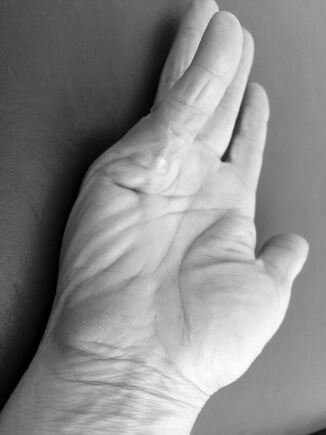Overview
Dupytren’s disease is a condition affecting the palmar fascia, the tissue layer under the skin of the palm. Scar tissue accumulates in the fascia and creates thickened tissue and/or nodules around the tendons in the palm. This accumulation contracts the finger and restricts full extension. As the deformity develops it is known as Dupytren’s contracture.
Whilst the exact cause of Dupuytrens’ Disease is unknown, it has been linked to family history. Interestingly, it has been dubbed “the Viking Disease” due to its prevalence in those of Northern European descent. Men are also far more likely to develop this condition than women.
Symptoms
This condition progresses slowly over years and most commonly affects the ring and little fingers. In advanced disease stages, these permanently flexed fingers may impede the patient’s ability to complete simple everyday tasks, like wash their face, or place their hand in their pocket. Pain is generally not associated with the condition.
Diagnosis
The diagnosis of Dupytren’s disease involves only a clinical consultation, as the condition is normally visible on examination, especially in severe cases. X-rays or scans are usually not required to assist with the diagnosis.
Treatment
Treatment of Dupytren’s contracture will depend on the severity of the condition. Non-surgical options may include a percutaneous needling procedure. Surgical treatment is by fasciotomy or fasciectomy under local or general anaesthetic (depending on severity). This involves Dr Mackay making an incision into the affected finger. The fascia is removed and full extension is re-gained. In some severe cases, a skin graft may be needed, however this would be discussed at the time of your consultation with Dr Mackay.
What to Expect in Recovery
Recovery following a fasciectomy will depend on how severe your contracture was and whether a skin graft was required. Dr Mackay works closely with hand therapists in rooms at post-operative appointments to ensure the best possible result. Returning to normal function and work duties will depend on the type of work you do. For sedentary work, you may be back performing light duties at the 2- to 3-week mark, however for those doing heavy manual labour, it may take a little longer to be back to duties.

Treatment of Dupytren’s contracture will depend on the severity of the condition.

